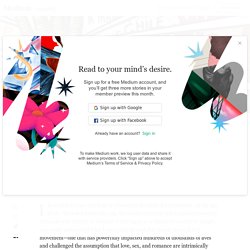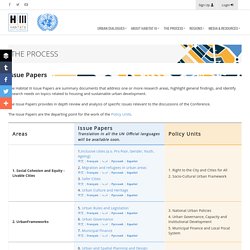

CT
Common Thread is a global social enterprise, engaging in capacity building, knowledge sharing, research and development - advancing solutions that are, low-cost, inclusive and sustainable, in the sectors of water & sanitation, health, infrastructure, shelter for the benefit of vulnerable communities worldwide.
Why Some Movements Thrive and Others Don’t – Member Feature Stories. I have had the rare privilege of witnessing the birth of a movement.

At the age of 18, I founded Asexuality.org, the world’s first and still-largest community of people who identify as asexual. What began as a desperate search for people who could understand what I was going through has grown into a global movement—one that has powerfully impacted hundreds of thousands of lives and challenged the assumption that love, sex, and romance are intrinsically linked.
The site mobilizes the work of hundreds of people on a daily basis, with an annual operating budget of only $3,000. Asexuality.org, and movements like it, are powerful mechanisms for organizing human labor to positively affect people’s lives. Though their leaders reside outside of the halls of power, the historical impact of these movements often surpasses that of our greatest economic institutions.
If a business is a machine built around money, a movement is a machine built around relationships. Awareness Orientation Affinity Groups. Connectivity Atlas. Issue Papers. Code of Conduct We want all members of Habitat-III to have a exciting, friendly and safe experience.

Accordingly, all site users and any contributions they make must comply with this Code of Conduct. By engaging with Habitat-III you accept and agree to abide by this Code of Conduct. Within this Code of Conduct, "contribution" means any material posted or uploaded to our websites by a member of the public, including any text, photographs, graphics, video or audio material.
General Rules:Users must not: Your Contributions: Must not plagiarize or violate copyright, database, trademark, trade secret, privacy, personal or proprietary rights of any kind. Users who violate these rules and contribution guidelines will be sent a warning message by the Habitat-III team identifying the issue at stake and notifying them of its removal. The Habitat-III team will periodically revise the Code of Conduct from time to time by amending this page. Sustainable development goals. Sustainable Development Goals End poverty in all its forms everywhere End hunger, achieve food security and improved nutrition and promote sustainable agriculture Ensure healthy lives and promote well-being for all at all ages Ensure inclusive and equitable quality education and promote lifelong learning opportunities for all Achieve gender equality and empower all women and girls. Gender_Poverty_and_Environmental_Indicators_on_African_Countries_-_2015.
1. How to Find Plagiarism. Plagiarists rely upon the anonymity and the vastness of the Internet to hide their activities.

Almost always, they know what they’re doing is wrong (at least morally) and though they seem very bold about their activities, they are betting that you won’t learn about their misuse of your work. What plagiarists don’t realize is that the same tools that make it easy for them to find works to steal also make it easy for you, the copyright holder, to retrace their steps and catch them. Because, even though the Internet is vast, it’s so well indexed that finding plagiarism is a very easy task. Non-Blogging Writers If you’re a writer looking for copycats, Google is your best friend. The first step to a successful Google search is to NOT use the title of your work. The best thing to do is to find a statistically improbable phrase (SIP) in your work and search for it. On your first try, place your SIP in quotes. If you get this message, click the link and repeat the search. Bloggers. See The World’s Most Spoken Languages In One Eye-Opening Infographic.
Around the world there are a total of 7,102 known languages, of this gargantuan amount twenty-three remain popular enough to be considered the most spoken languages of the world.

These 23 languages are considered the mother tongue for more than 50 million people and the native tongue for more than 4.1 billion people. To put this into perspective there are currently around 7.2 billion people living on planet earth. The circle represents the 4.1 billion people around the world that speak one of the 23 most spoken languages. The graphic further breaks down these numbers by the amount of people that speak a given language according to country.
Infographic artist Alberto Lucas Lopez created this interesting breakdown for the South China Morning Post. Geocaching.
Wuf7. Advocacy.